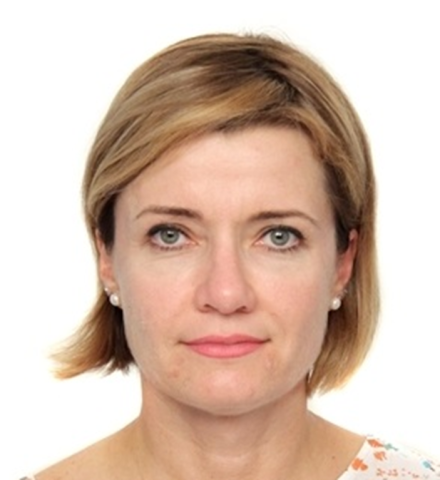NOMATEN HYBRID-SEMINAR May 27: Zinc oxide nanostructures for applications in optoelectronics
NOMATEN HYBRID-SEMINAR
online: https://meet.goto.com/NCBJmeetings/nomaten-seminar
In-person: NOMATEN seminar room (102)
Tuesday, MAY 27th 2025 1 PM (CET)
Zinc oxide nanostructures for applications in optoelectronics
Alexandra Apostoluk, Ph.D., D.Sc. Eng.
Institut des Nanotechnologies de Lyon, Institut des Sciences Appliquées de Lyon, France
Abstract:
Luminescent nanoparticles based on wide bandgap metal oxides offer an alternative to lanthanide phosphors, as they assure the material demand for white light emitting diodes (WLEDs) and down-shifters for solar cells, mainly thanks to their high chemical and thermal stability, low toxicity and low cost of fabrication. We recently reported a simple route to synthesize highly efficient organic-inorganic hybrid material combining ZnO nanoparticles (NPs) and PAAH (polyacrylic acid) to be used as white down-converting phosphor [1]. This material turns out to be highly efficient is in terms of high photoluminescence quantum yield (PLQY = 70 %) and gives white light emission.
We showed that it is possible to control the color of the light emission of these nanoparticles via doping with different transition metals for the application in thin films for LED technology [2]. Another method to enhance the emission from ZnO-PAAH structure, is its encapsulation by silica shell, leading to a significant increase in light capture capacity [3]. Other applications of zinc oxide nanostructures will also be presented, for example in photocatalysis.
References
[1] Intense visible emission from ZnO/PAAX (X = H or Na) nanocomposite synthesized via a simple and scalable sol-gel method, Y. Zhu, A. Apostoluk, P. Gautier, A. Valette, T. Cornier, J. Bluet, K. Masenelli-Varlot, S. Danièle, B. Masenelli, Scientific Reports 6, pp. 23557 (1-11), 2016; DOI: 10.1038/srep23557
[2] Doping of ZnO inorganic-organic nanohybrids with metal elements, Y. Zhang, A. Apostoluk, C. Theron, T. Cornier, B. Canut, S. Danièle, B. Masenelli, Scientific Reports 9, 11959, 2019. DOI: 10.1038/s41598-019-48497-3
[3] Visible luminescence improvement of ZnO/PAA nano-hybrids by silica coating, Y. Zhang, T. Gard, C. Theron, A. Apostoluk, K. Masenelli-Varlot, B. Canut, S. Daniele, B. Masenelli, Applied Surface Science 540 (1), pp. 148343-148347, 2021. DOI: 10.1016/j.apsusc.2020.148343
Bio:
Alexandra Apostoluk, has been working on the emission of materials since her Engineering and MSc at Wroclaw University of Technology (Poland) and through her PhD in 2000-2003 at Université d’Angers (Angers, France). In 2003, she joined the Commissariat à l’Energie Atomique (CEA) in Saclay, France, for a 2-year post-doc on polymer semiconductors and worked as a temporary lecturer at Ecole Polytechnique de Palaiseau (France). In 2005 she worked as a lecturer and researcher at the University of Technology of Troyes. In 2006 she became an associate professor at INSA Lyon and a researcher at Institute of Nanotechnology of Lyon (INL), working on III-V and later on II-VI nanostructures. She has a rich experience in both national and international academic and industrial research projects or networks and educational projects. She is a co-author more than 39 scientific papers, 2 book chapters and was 13 times an invited speaker in international conferences. She worked as an invited researcher at Thamassat University (Bangkok, Thailand), KEIO University (Yokohama, Japan), at Tokyo University (Tokyo, Japan) and JAIST (Kanazawa, Japan). Thanks to her training and thematic and geographic mobility (Poland, France, Thailand, Japan), she acquired a polyvalent expertise in the nanomaterial fabrication and deposition techniques, structural properties of polymer and crystalline materials, properties of oxides and in the field of optical spectroscopy.







